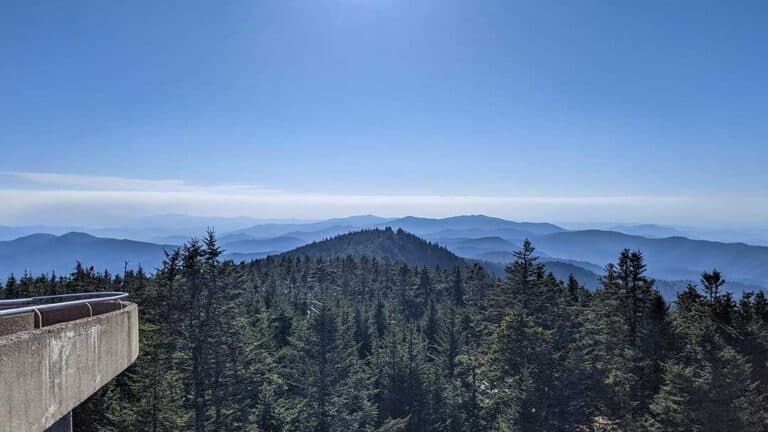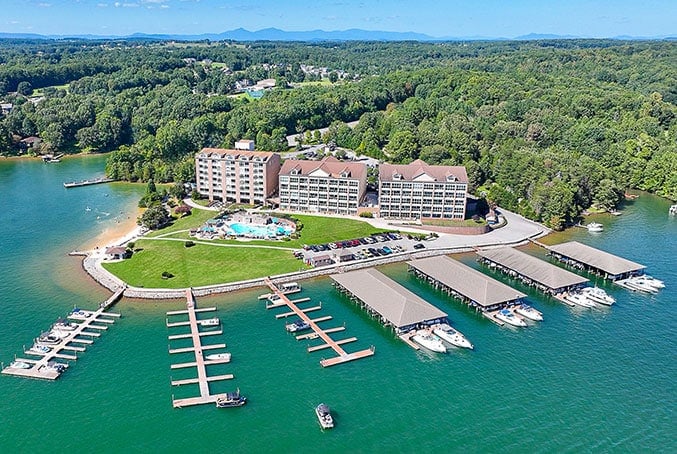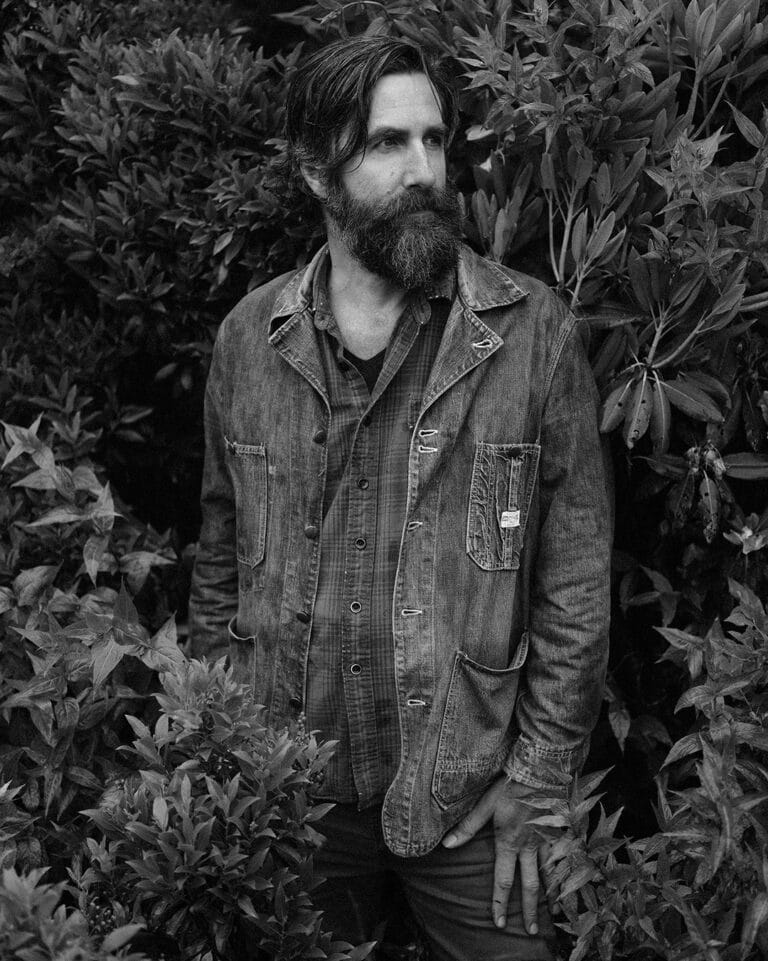Picture yourself getting pinned underwater while kayaking, the pressure from the rushing water crushing your back against the hard granite. Or maybe you’re rock climbing when the rope begins to fray, unwinding to just a sliver before it snaps completely. Perhaps you’re mountain biking a steep, rocky downhill, when suddenly your front wheel catches on a root and you’re catapulting headfirst toward a tree. 

So much can go wrong in the world of adventure sports. It’s easy to tap into our deep-seeded fears and dwell on the worst-case scenario for any given situation. And yet every day, athletes put themselves in situations that seem death defying: jumping off bridges, dropping 50 foot waterfalls, launching off huge dirt kickers at 20 miles per hour with only a plastic helmet and an aluminum bike for protection. Today’s adventure athletes seem fearless, pushing their sports beyond benchmarks that were once thought impossible. 

But fear is a natural mental and physiological process that has played a key role in our species’ survival over the ages. Have some athletes lost touch with the importance of fear? Witness skateboarders jumping the Great Wall of China. Witness the growing popularity of speed free climbing, sky diving, 100-mile foot races across the desert, and backcountry skiing in avalanche territory. Has the adventure sports culture reached a point where there is literally “no fear”? 

the anatomy of fear

When you watch a scary movie, neural pathways called serotonin receptors send information about the slasher flick to a part of your brain called the amygdala. The amygdala is the “fear switchboard.” It analyzes the information coming in from the receptors and determines the significance of the situation, triggering an appropriate emotional response and changing the inner workings of the body’s organs and glands. This is the “fight or flight” response: a physiological reaction to a dramatic and threatening situation in which the brain produces excessive amounts of norepinepherine and adrenaline—chemicals that give us extra strength and increased energy. The same chemical reaction takes place when we see a bear in the woods or when we approach a boulder drop on a mountain bike trail. 

“Fear is fear is fear is fear,” says Jono Senk, a former Special Operations Airborne Ranger and owner of Hairy Scary Evolutions, a company that uses extreme sports to help people overcome fears of all kinds—fear of conflict, public speaking, injury, the dentist. “People come to me with all kinds of fears, but ultimately, they’re all the same.” 

From an evolutionary standpoint, the neural and physical reaction that we recognize as fear was designed to keep us alive in dangerous situations. All animals experience fear. It’s hard-wired into their DNA—a gazelle running from a lion, a bear protecting her cubs from an intruder, a snake coiling before it strikes. Fear is a reality for every animal on the planet, but humans are the only living animal that actually seeks out the physiological response associated with fear. Exhibit A: the popularity of scary movies, and the millions of people who sky dive each year. 

“We’re the only living animals that enjoy this kind of experience,” says Dr. Paul Rudd, a psychologist and professor at Texas Tech who writes extensively on fear. “Fear, or the autonomic arousal response associated with fear, is a form of protection and survival. But humans can interpret the difference between a situation that calls for safety or excitement. We can evaluate risk in a very precise way. Sky divers, for instance, are able to enjoy falling from the sky as excitement instead of fear.” 

Push a lion out of an airplane with a parachute on its back and it isn’t going to enjoy the experience, but humans can enjoy it. We’ll even pay money to do it time and again. 

Not that the entire human population has completely lost touch with the fear instinct altogether. Countless people never pursue rock climbing because of a fear of heights. A fear of drowning keeps many people out of a kayak. 

But an entire industry has evolved to help average people overcome their most paralyzing fears. The message coming from psychologists, life coaches, and hypnosis CDs is plain and simple: live with your fears and you’re living with your hands metaphorically tied behind your back. 

Steve Pavlina is a popular self-help guru who preaches self-help via the internet. Pavlina believes that “the real purpose of fear is as a trigger for growth. Avoid your fear and you stunt your growth,” he says bluntly. “If you’re afraid, you’re wrong.” 

It’s a popular viewpoint that sells millions of self-help books and “No Fear” bumper stickers every year, and it’s not a new way of thinking. Zen Buddhists have practiced a similar viewpoint for centuries, believing that fear is imaginary and predominantly a matter of the power of suggestion. Think negatively, and your life will become negative. 

Dr. Rudd agrees with this notion to a point. “A lot of fear is cognitive,” Rudd says. “There can be an inaccuracy of interpretation, a faulty appraisal of risk.” 

Go back to the image of yourself drowning in the kayak. You’re fixating on one very unlikely situation, much in the same way that some people fixate on alien abduction. That, according to Rudd, is an “inaccuracy of interpretation.” You’re literally distorting reality. 

So is it wrong to be afraid? Obviously a fear of pumpkins is irrational, but what about the adventure sports world, where athletes are injured on a regular basis? Is it wrong to feel fear when you’re standing at the lip of a black diamond tree run? 

According to sports psychologists, it’s an oversimplification to believe that all fear is wrong. 

“If there’s really a bear, it’s not paranoia,” says Dr. Natalie Newton, an Atlanta-based sports psychologist who works with ultra runners, cyclists, and equestrians. “Some activities are simply higher risk than others.” 



NATURE VS. NURTURE

“I got stuffed beneath an undercut boulder the size of a house on the Linville River,” says Jeff West, a class-V paddler who has made a name for himself by paddling the toughest creeks in the region. “My world went dark as I slid under the rock. I tried swimming out the way I came in and reached towards the light, only to find a strong current that pushed me deep into an underwater cave system. I needed to breathe, but I just remember relaxing. I slid and bounced through dark tunnels and after about one minute I opened my eyes to daylight. I was ten feet below the surface in a pool behind the boulder. The water was calm and I remember seeing the tree limbs overhanging the pool. I swam to the surface and got my first breath.” 

For most people, getting trapped in an underwater cave system would mark the end of their paddling careers. Countless athletes have thrown in the towel after a near-death encounter like this. But West was back on the river the next day—not that he wasn’t scared of something similar happening again. 

“I played football for ten years. I’m not afraid to take a hit,” West says. “But undercuts are scary.”

So how can Jeff West and others like him get back onto the river after such an experience? How has a small percentage of the population seemingly moved beyond fear, while the rest of us refuse to see the latest Halloween remake? 

It could be partially a matter of genetics. Studies performed at the University of Pittsburgh suggest the number and ratio of an individual’s serotonin receptors (the neural pathways that carry information from the outside world to the amygdala) affect how we react in a fearful situation. The size of the amygdala itself can also contribute to how an individual will respond in a stressful situation. Studies performed at the University of Delaware support these claims, even suggesting there are two different kinds of people, “High Sensation Seeking Personalities” (HSS) and “Low Sensation Seeking Personalities” (LSS). According to the Delaware study, “the cortical system of a HSS can handle higher levels of stimulation without overloading and switching to the fight or flight response…their brains automatically dampen the level of incoming stimuli, leaving them with a kind of excitement deficit.” 

In other words, some people may be predisposed to handle their fears better than others. 

“The level of physiological arousal is partially genetically defined and is evident in infancy. You carry it with you throughout your life,” says Dr. Rudd. “Some people need more stimulation to feel that adrenaline rush; some people need less.” 

The University of Delaware study even hypothesizes that people could develop a tolerance for the adrenaline reaction associated with fear and may need riskier situations to achieve the same feeling. According to the study, rock climbers fit this mold better than any adventure athlete. In the rock climbing world, as in most adventure sports, there is a constant need to pursue harder, more challenging situations. 

Sean Cobourn has been rock climbing in the Southeast for years, developing routes and climbing hard throughout the region. He’s climbed Fruit Loops, a relatively easy 5.7 route on Rumbling Bald, countless times. Going by the University of Delaware study, Cobourn is a text-book case of “adrenaline tolerance.” 

“I’ve climbed Fruit Loops without ropes,” Cobourn says. “I’ve done it as fast as I can. I’ve even done it blindfolded. When you do something over and over, you have to find ways to make it interesting. But I can still remember when just climbing the route normally was scary.” 

Jono Senk sees this sort of risk escalation played out time and again with his clients. For individuals who come to him with irrational fears, like a fear of public speaking, Senk puts them through “training evolutions”—which is a nice way of saying he scares the hell out of them. 

“I try to push them way past what they would experience in their personal or professional world,” Senk says. “If they can handle what I put them through, they can handle anything in their daily lives.” 

Senk’s favorite “training evolution”? A 300-foot rappel through a waterfall…at night. Imagine going to Senk with a fear of the dentist and finding yourself hanging from a rope hundreds of feet off the ground…in the middle of the night…with water crashing all around you. 

“It’s a life changing experience,” Senk says. “My clients feel charged for weeks after these training evolutions. They actually seek out the things they were originally scared of.” 



PRACTICING COURAGE

Genetics will only get you so far in a situation like waterfall rappelling or steep creek boating or rock climbing. Most adventure athletes, regardless of their genetic predispositions, seem fearless to the outside world because they work very hard before they even get to that fear-inducing situation. 

Anna Levesque is an Olympic-level freestyle paddler who began creek boating when she moved to Asheville several years ago. Levesque, who now teaches women’s boating clinics through her company Girls At Play, constantly emphasizes the importance of progressing through fear to her students. 

“The first time I ran the Green, I ran Gorilla because that’s what the guys I was boating with were doing,” says Levesque. “I just didn’t think about it. I just threw myself into it without building any sort of progression. And I never felt like I was in control.” 

It’s a common feeling for many kayakers, according to Levesque. “Kayaking is so male dominated. It’s about pushing, pushing, pushing and powering through your fear. As a result, so many boaters don’t give themselves the time they truly need to get comfortable on a particular river. Boaters tic off rivers like a to-do list. ‘I paddled this river and that river, now I have to paddle the next river.’ But you have to have compassion for yourself. Instead of pushing through your fear, step back and really analyze the situation. Take some time to build your confidence up, then address your fear.” 

Jono Senk helps athletes overcome the common fears that keep most people out of extreme sports. For example, say you’re a downhill mountain biker, and you simply can’t shake the notion that going 30 mph down a slope full of rocks, jumps, and switchbacks is detrimental to your health. Senk helps work that fear out of you.

“What the best athletes understand, is that in order to manage fear, you have to go over the given terrain and the skills you need for that terrain over and over,” Senk says. “You break it down into small chunks. You work with the environment and each individual skill, getting used to the challenge until it becomes mundane. It gets boring. Then you want something more challenging.” 

Dr. Newton uses a similar “fear tolerance” technique with her athletes. “You’ve got to condition yourself out of the fear response and you do that with slow exposure to similar situations to the one that causes you fear. Each time you walk away from a challenging situation that is similar to the one that induces fear, you’re building your confidence level.” 

Trevyn Newpher is a professional downhill and freeride mountain biker who argues that it is this very process that makes athletes a success or failure. “You learn who you are, your body and your mind,” Newpher says. “You will have certain fears, but you learn when to push those fears and when not to. Eventually, you ride with confidence because you have a better understanding of your abilities and you know to a certain extent how things will turn out.” 



STILL SCARED

Jason Bell likes to jump out of airplanes. He likes to jump off bridges too. Bell is the owner of Vertical Visions, a skydive visual media company that’s best known for coordinating the massive BASE jump during Bridge Day in West Virginia. In his gravity defying career, he’s completed roughly 500 BASE jumps and 500 skydives. Ask him if he’s worried about his chute not opening on one of those jumps and he’s quick to say no. 

“The thought that I could die lasts about two seconds,” Bell says. “Several of my friends have died jumping, but if I’m deep enough into any sport, you’re going to see those kinds of casualties. That doesn’t mean I’m not scared. Jumping off a bridge is about as crazy of a thing you could do with your time. If you don’t get scared, you should quit, because that’s when you get complacent. That’s when you get hurt.” 

Most adventure athletes share the same sentiment. They question the notion that a person could completely transcend fear, as many self-help gurus suggest. 

“I’m scared every time I paddle the Narrows,” Anna Levesque says. “The Green is intimidating. Nature is stronger than us. Water is so powerful, it’s silly not to be scared. You have to assess the risk. The trick is to not let that fear overwhelm you.” 

It sounds like a simple enough concept, but anyone who’s ever consciously faced their fears knows that it’s no walk in the park. Genetics aside, mastering the mental game of fear is what truly separates the elite athlete from the average. 

“Everyone’s afraid,” Jono Senk says. “But some people learn how to compartmentalize that fear and not obsess over it.” 

Senk adds that most people who are scared of heights simply never take up rock climbing, but others learn a way to work around their fear. “Instead of focusing on falling to your death, the successful ones learn to focus on how they will feel after they climb the cliff. You think about each individual hold on the route up the mountain. Only when you get to the top of the climb do you think about the whole challenge. By then, you’ve conquered it.”

Newpher uses a similar tactic when competing in downhill mountain bike races. “I take time before each race to get into a certain mental state. I develop a plan for the ride. I conceptualize it in my mind, so when it comes to actually doing it, it’s instinctual. I make it as automatic as possible.” 

Levesque practices yoga. “It helps with the nerves. It’s about focusing on your breath and breathing deeply. If you’re in a stressful situation, you’re probably not breathing, or you’re breathing really quick, short breaths. Just taking the time to breathe properly at the beginning of a river helps calm me down.” 

The majority of adventure athletes never completely let go of their fear. Instead, they walk the fine line between recognizing their fear and being paralyzed by it. 

Trevyn Newpher is scared every time he approaches a 30-foot jump at Snowshoe’s bike park. “You clear the gap or you eat it. I look at that jump and I still get butterflies. Every time I ride it, I do a couple of practice runs, getting comfortable with the speed necessary to clear the distance. If I have any doubts, I won’t do it. But there’s a certain point when you have to accept your chances. There’s a point of commitment. You know your speed, you see the jump, you spot your landing, and you’re doing it. It’s an awesome feeling.” •

Snowshoe mountain bike park
<object width=”425″ height=”350″><param name=”movie”
value=”http://www.youtube.com/v/fsV0MFnizcQ”></param><param name=”wmode”
value=”transparent”></param><embed
src=”http://www.youtube.com/v/fsV0MFnizcQ”
type=”application/x-shockwave-flash” wmode=”transparent” width=”425″
height=”350″></embed></object>
Kayaking carnage
<object width=”425″ height=”350″><param name=”movie”
value=”http://www.youtube.com/v/bMAaKuICWAY”></param><param name=”wmode”
value=”transparent”></param><embed
src=”http://www.youtube.com/v/bMAaKuICWAY”
type=”application/x-shockwave-flash” wmode=”transparent” width=”425″
height=”350″></embed></object>
Linville gorge paddling
<object width=”425″ height=”350″><param name=”movie”
value=”http://www.youtube.com/v/Phx3VpDozM4″></param><param name=”wmode”
value=”transparent”></param><embed
src=”http://www.youtube.com/v/Phx3VpDozM4″
type=”application/x-shockwave-flash” wmode=”transparent” width=”425″
height=”350″></embed></object>







